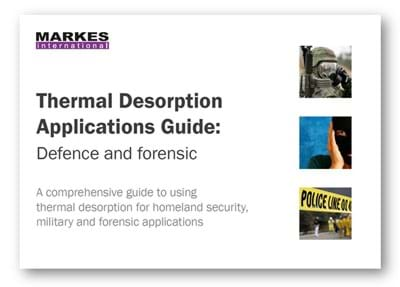
Thermal Desorption Applications Guide: Defence and forensic
A comprehensive guide to using thermal desorption for homeland security, military and forensic applications
Defence and homeland security
 Although the 1997 Chemical Weapons Convention has been ratified by nearly all countries, the need to detect chemical warfare agents continues. This is increasingly to guard against their use by terrorist organisations, in addition to treaty obligations and military applications, such as decommissioning historic chemical agent stockpiles.
Although the 1997 Chemical Weapons Convention has been ratified by nearly all countries, the need to detect chemical warfare agents continues. This is increasingly to guard against their use by terrorist organisations, in addition to treaty obligations and military applications, such as decommissioning historic chemical agent stockpiles.
In the first section of this Applications Guide, we describe how thermal desorption (TD) can be applied to the detection of chemical agents. We describe both on-line monitoring of chemical agents, for rapid response to incidents in key civilian and military locations, and off-line tube-based monitoring of agent stockpiles and other materials.
Forensic
The detection of volatile and semi-volatile organic compounds (VOCs and SVOCs) is an important aspect of forensic science, as it can provide unequivocal evidence for the use or presence of incriminating materials.
In the second section of this Applications Guide, we describe how thermal desorption (TD) can be applied to forensic studies – from the analysis of shotgun propellant to the analysis of fire debris for accelerants.




